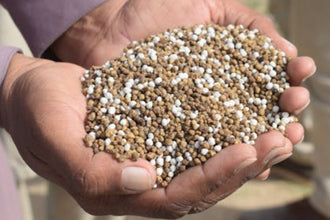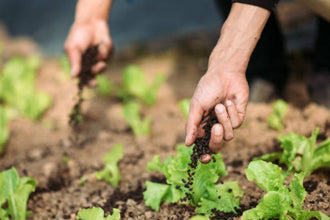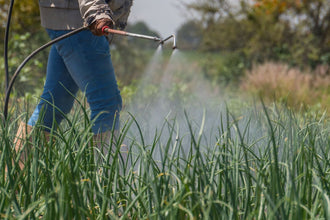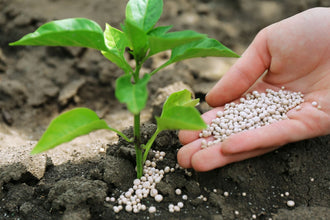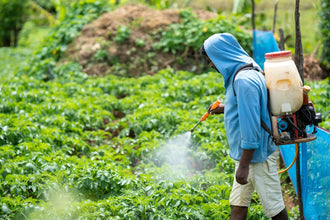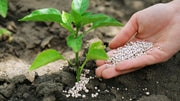
Fertilizer effectiveness isn't as simple as throwing some plant food on your garden and crossing your fingers. Most gardeners waste their money and get disappointing results because they don't know how nutrients actually work in soil. Getting fertilizer to work better means understanding timing, proper application, and what your soil really needs.
You might think fertilizer works like instant coffee. Just add water and boom, plants get fed. That's not how it works at all. Your soil's chemistry, how acidic or basic it is, moisture levels, temperature, and even what time you apply fertilizer all matter. These factors decide whether your plants can actually use the nutrients you're giving them.
The difference between gardens that thrive and ones that struggle often comes down to these details. Smart gardeners know that fertilizer effectiveness depends on working with nature, not against it.
How Plants Really Get Their Food
Plants don't just soak up fertilizer like a sponge. They need help from tiny organisms in the soil to break down nutrients into forms their roots can actually use. This whole process takes time and needs the right conditions to happen.
Think of your plant's root area like a busy farmer's market. Nutrients get traded, changed around, and moved from place to place. Nitrogen might show up in several different forms in your soil, but plants can only use certain types. Phosphorus sticks to soil particles and becomes useless if conditions aren't right. Potassium has to compete with other nutrients to get into plant roots.
This explains why two gardens using the same fertilizer can have totally different results. The healthiest soil in the world won't help if the underground community of microbes isn't doing its job.
Why Soil pH Controls Fertilizer Effectiveness
Your soil's pH acts like a bouncer at a club, deciding which nutrients get in and which ones stay locked out. Most vegetables and flowers like soil that's slightly acidic to neutral, somewhere between 6.0 and 7.0 pH. When soil gets too sour or too sweet, nutrients get stuck in forms plants can't touch.
Ever seen plants with yellow leaves even though you've been fertilizing regularly? That's often iron getting locked up in soil that's too alkaline. Phosphorus disappears in soil that's either too acidic or too basic. Testing your soil pH before you start fertilizing can save you a lot of head scratching later.
Getting the Timing Right
Plants don't want the same nutrients all year long. In early spring, they're hungry for nitrogen to grow new leaves. During flowering and fruiting season, they need more phosphorus. Before winter hits, potassium helps them toughen up for cold weather.
Temperature plays a huge role in fertilizer effectiveness too. Cold soil is like a sleepy town where nothing much happens. The helpful bacteria slow down, and nutrients just sit there doing nothing. Really hot weather can make nutrients break down too fast or just evaporate away. Morning feeding usually works better than evening applications because plants are wide awake and ready to eat.
Better Ways to Apply Fertilizer
How you put fertilizer on your garden matters just as much as what kind you use. Sprinkling granules all over the soil surface works sometimes, but putting fertilizer in bands near plant roots or side-dressing often gives you better bang for your buck.
Liquid fertilizers work fast but don't stick around long. Granular types release nutrients slowly but might not be ready when plants need them most. Using both methods during the growing season usually gives the best results.
Water Makes All the Difference
Water is like the delivery truck for nutrients. No water means nutrients stay stuck in the soil where plant roots can't reach them. Too much water washes everything away before plants can grab it. The trick is finding that sweet spot of steady moisture.
Sandy soil drains fast, so you need to feed plants little and often. Clay soil holds onto nutrients longer but can get waterlogged and create conditions where roots can't breathe. Knowing what kind of soil you have helps you figure out how much fertilizer to use and when to water.

Organic Matter Works Like Magic
Compost, aged manure, and rotted leaves act like slow release fertilizer factories in your soil. They feed the good bugs and bacteria that make nutrients available to plants over months instead of days. These additions also make soil easier for roots to grow through, which means plants can reach more nutrients.
Cover crops are another smart trick for boosting fertilizer effectiveness. Plants like clover and peas actually make their own nitrogen from air. Deep rooted crops pull minerals up from way down in the subsoil. When these cover crops rot, they feed all the tiny soil creatures that help regular fertilizers work better.
Mistakes That Kill Fertilizer Effectiveness
Using too much fertilizer is the biggest mistake home gardeners make. More fertilizer doesn't always mean better results. Too much nitrogen can actually stop plants from flowering and make them sitting ducks for bugs and diseases. Overdoing phosphorus messes with how plants absorb other important nutrients.
Putting fertilizer on cold soil is like trying to start a car with a dead battery. The soil organisms that process nutrients are basically hibernating, so most of your fertilizer will be gone by the time they wake up. Fall nitrogen applications often wash away during winter rains before spring arrives.
Hard Soil Blocks Everything
Compacted soil makes fertilizer effectiveness impossible no matter how much you apply. Plant roots can't push through hard packed earth to reach nutrients. Water and air can't get down to support the microscopic life that makes nutrients available to plants.
Simple fixes can prevent soil compaction:
-
Stay off garden beds when soil is wet
-
Add compost or other organic matter regularly
-
Use mulch to protect soil surface
-
Create permanent walking paths
For soil that's already packed hard, try broadforking or core aerating to open things up without destroying beneficial soil life.
The pH Roller Coaster
Many gardeners don't realize that fertilizers can change soil pH over time. Nitrogen fertilizers made from ammonium gradually make soil more acidic. Lime based products push pH higher. These changes can wreck fertilizer effectiveness if pH swings outside the range your plants like.
Testing soil every year or two helps you catch pH problems before they get serious. Adding plenty of organic matter helps keep pH stable and creates better growing conditions overall.
Advanced Tricks for Better Results
Mycorrhizal fungi are like having a superhighway system for plant roots. These beneficial fungi team up with roots and can reach nutrients that roots could never get to alone. You can buy mycorrhizal inoculant or just avoid doing things that kill these helpful fungi.
Foliar feeding means spraying liquid fertilizer right on plant leaves. Leaves can soak up certain nutrients faster than roots, especially micronutrients like iron and zinc. Early morning works best because leaf pores are open and ready to absorb nutrients.
Creating Perfect Growing Spots
Raised beds and containers let you control soil conditions completely. You can mix up the perfect soil recipe for your plants and avoid all the problems that come with whatever soil you happen to have in your yard.
Companion planting also affects fertilizer effectiveness. Deep rooted plants can mine nutrients from lower soil layers and share them with shallow rooted neighbors. Plants that fix nitrogen naturally fertilize heavy feeders growing nearby. Planning your garden with these partnerships in mind improves how well fertilizers work overall.
Keeping Track of What Works
Plant tissue testing tells you more about nutrition than soil tests alone. Your soil might be loaded with nutrients, but tissue tests show what's actually getting into your plants. This information helps you fine tune your fertilizer program for maximum effectiveness.
Your plants will tell you how well fertilizer is working if you know what to look for:
-
Yellow older leaves usually mean not enough nitrogen
-
Purple leaf stems often signal phosphorus problems
-
Brown leaf edges can mean potassium shortage or too much salt from over fertilizing
-
Pale new growth might indicate iron deficiency
Adjusting with the Seasons
Spring feeding should get plants off to a good start without overwhelming them. Summer applications need to balance growth with helping plants handle heat stress. Fall fertilizer should prepare plants for winter and set them up for next year's growth.
Weather patterns change fertilizer needs too. Wet springs might wash away nutrients and require extra nitrogen applications. Hot dry summers might need lighter feeding to prevent salt stress. Paying attention to weather and adjusting your fertilizer program accordingly improves results.
Start Getting Better Results Today
Smart fertilizer use gives you healthier plants, bigger harvests, and fewer problems in your garden. Understanding how plants actually absorb nutrients helps you make better choices about what to apply and when to do it. Your garden will reward you with stronger growth, better disease resistance, and more food or flowers.
Testing your soil, timing applications right, and watching how your plants respond creates a cycle that improves fertilizer effectiveness over time. Small changes in how you feed your plants can make huge improvements in how your garden performs while saving money and reducing waste.
Ready to transform your garden with better fertilizer practices? Start with a soil test, choose high quality organic fertilizer that works with natural soil processes, and watch your garden become the thriving space you've always wanted.




